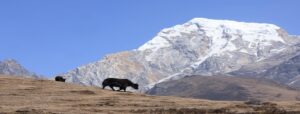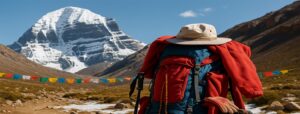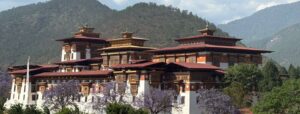Solo Trek to Everest Base Camp – Scaling the heights of the mighty Everest has always been a dream for many. The Everest Base Camp Trek is one of the most sought-after treks in the world, which has been drawing adventure enthusiasts from all corners of the globe. Trekking to the base camp of the highest mountain in the world is not just an ordinary trek, but a once-in-a-lifetime experience.
While most trekkers undertake this journey in groups, some prefer to embark on this journey solo. If you are one of those who wish to undertake the Solo Everest Base Camp Trek, then buckle up, for you are in for an adventure of a lifetime.

Trekking to Everest Base Camp alone is possible, but it requires careful planning and preparation. The trek to Everest Base Camp is a challenging and remote journey that can take up to two weeks or more to complete, depending on your pace and the route you take.
The trek begins in Lukla, a small town that’s only accessible by air. The flight to Lukla is an adventure in itself, with the small planes weaving their way through the mountain passes before landing on a short, sloping runway. From Lukla, the trail winds its way through the Khumbu Valley, passing through dense forests of rhododendron and pine, and across suspension bridges spanning deep gorges.
Everest Base Camp Solo Trek Pass through villages
As you make your way toward Everest Base Camp, the views become increasingly dramatic. You’ll pass through the charming villages of Namche Bazaar, Tengboche, and Dingboche, each with its own unique character and culture. Along the way, you’ll also encounter numerous chortens, prayer flags, and mani walls, which serve as reminders of the spiritual significance of the region.
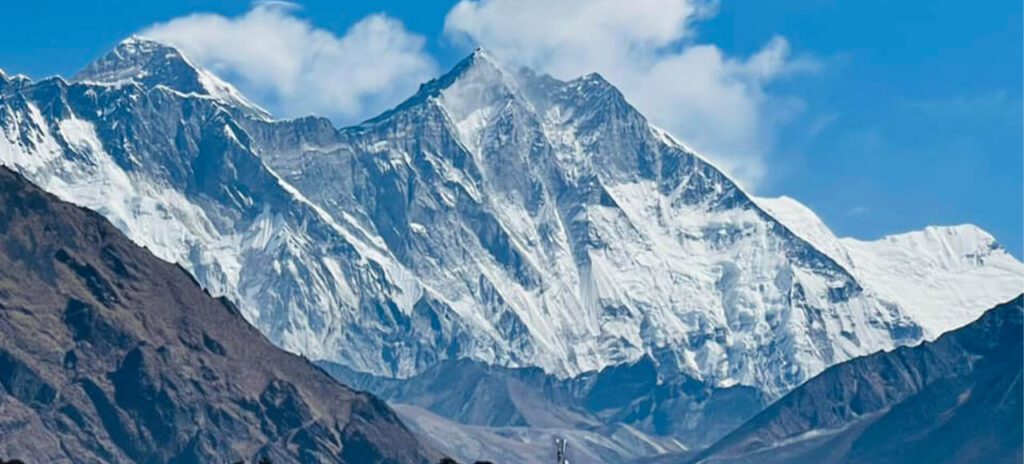
As you near Everest Base Camp, the landscape becomes increasingly barren and otherworldly. The Khumbu Glacier comes into view, and you’ll catch glimpses of the iconic peaks of Lhotse, Nuptse, and of course, Mount Everest itself. The final push to Base Camp is a steep, rocky climb, but the moment you reach your destination is one you’ll never forget. Standing at the foot of the world’s tallest mountain is a humbling and awe-inspiring experience.
Of course, undertaking a solo trek of this magnitude requires careful planning and preparation. You’ll need to ensure you have all the necessary equipment and supplies, including warm clothing, a sturdy backpack, and a reliable GPS device. You’ll also need to be in good physical shape and have experience trekking at high altitudes.
If you are planning to embark on your Everest Base Camp Solo Trek then here are some helpful tips:
Navigation tools
Navigation tools are crucial when trekking alone because they help you stay on course and avoid getting lost. When you’re alone, you don’t have anyone to rely on for directions, and you may not be familiar with the terrain you’re exploring. Navigation tools such as maps, compasses, GPS devices, and even smartphone apps can help you navigate and stay on track. Navigation tools help you to stay safe by keeping you on track and helping you avoid hazardous areas or dangerous situations.
Also Check: Food and Accommodation on Everest Base Camp Trek
With proper navigation tools, you can efficiently navigate through your trek and avoid getting lost. You won’t waste time wandering aimlessly or backtracking. When you’re trekking alone, it’s easy to get disoriented or feel uncertain about your location. Navigation tools can help you maintain your confidence, knowing that you are on the right path. Accidents and emergencies can happen anytime during a trek, and knowing your location and having the right navigation tools can help you prepare for any unforeseen circumstances.
Adequate Clothing for Everest Base Camp Solo Trek:
When you’re trekking alone, you’re responsible for your safety. Adequate clothing protects you from harsh weather conditions such as extreme cold or heat, rain, and wind. This helps to keep you comfortable and prevent the onset of hypothermia or heatstroke. Whether it’s hiking or trekking, you need to move your body freely and comfortably. Adequate clothing that fits well and allows for a full range of motion is essential for this.

Proper clothing can help prevent injuries such as blisters, chafing, and sunburn. Wearing the right type of shoes or boots with good grip and support can also help prevent falls and twisted ankles. Wearing brightly colored clothing or reflective gear can make you more visible to other hikers or rescue teams in case of an emergency. This can be especially important when trekking alone, as there is no one else around to help in case of an accident.
Water and food you should carry on Everest Base Camp Solo Trek:
Trekking to Everest Base Camp requires a significant amount of physical exertion, which means your body needs adequate fuel to keep going. Carrying enough food and water will help ensure that you have the energy you need to complete the trek.
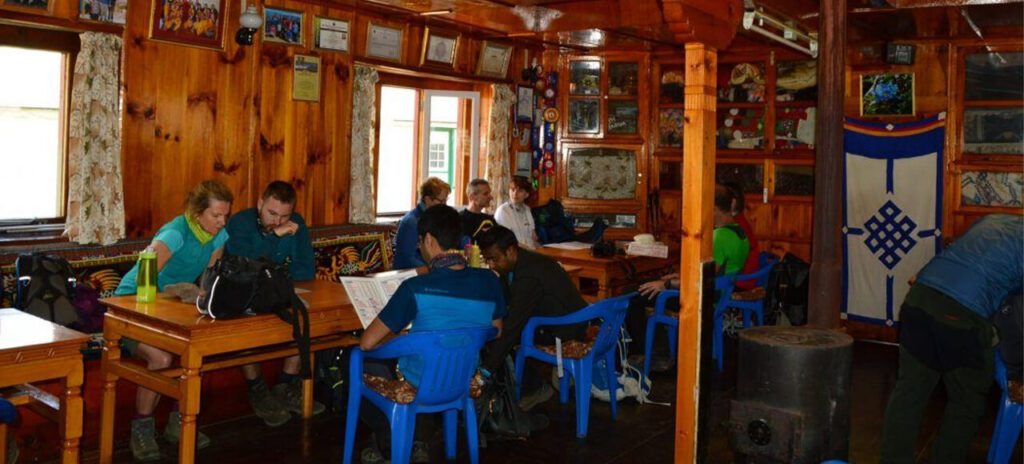
Staying hydrated is essential for maintaining good health and preventing altitude sickness. When you’re trekking in high-altitude environments like Everest Base Camp, it’s even more important to drink enough water to prevent dehydration and associated health risks.
Along the trek, there are limited options for food and water. Bringing your supplies ensures that you have access to clean water and nutritious food to keep you going throughout the trek. In case of an emergency or unexpected delays, having extra food and water can help sustain you until help arrives. Bringing your food and water can save you money on the trek, as food and drinks sold along the trail are often more expensive than in the cities.
First Aid Kit for Everest Base Camp Solo Trek:
It is crucial to have a first aid kit during a solo trek in Everest Base Camp because accidents and injuries can happen at any time, and medical assistance may not be readily available in remote areas. Some of the potential hazards that hikers may face in the Everest region include altitude sickness, hypothermia, frostbite, dehydration, and injuries from falls or accidents. Having a well-stocked first aid kit can help you to treat minor injuries and illnesses before they become more serious.
For example, if you have blistered feet or a headache from altitude sickness, having painkillers, bandages, and other basic medical supplies can help you to continue your journey safely. In more serious cases, a first aid kit can provide lifesaving assistance while waiting for emergency medical help. It’s important to have items like sterile gauze, antiseptic solutions, and a tourniquet in case of severe injuries, as well as a communication device to call for help.
Safety Gear:
It is crucial to have safety gear during a solo trek to Everest Base Camp because the journey can be dangerous and unpredictable. The trek to Everest Base Camp involves high altitudes, extreme weather conditions, difficult terrain, and potential risks of injury or illness. The trek to Everest Base Camp involves hiking at high altitudes, which can lead to altitude sickness.
Symptoms of altitude sickness can include headaches, nausea, and shortness of breath. Having a portable oxygen tank and a pulse oximeter to monitor oxygen levels can help prevent and treat altitude sickness. The weather conditions in the Everest region can be extreme and unpredictable. It can be hot during the day and cold at night, and sudden snowstorms or high winds can occur.
Also Read: Everest Base Camp Trek Route
Having proper gear such as a good quality down jacket, gloves, and waterproof boots can help protect you from the elements. The trek involves hiking on uneven terrain, steep inclines, and rocky paths, which can be slippery and hazardous. Wearing sturdy trekking shoes with good grip and using trekking poles can help prevent slips and falls.
In case of an injury or illness, having a first aid kit with basic medical supplies such as bandages, antiseptic, and pain relievers is essential. It is essential to have a reliable means of communication, such as a satellite phone or a personal locator beacon, to call for help in case of an emergency.
Communication Devices:
There are several reasons why having communication devices during a solo trek to Everest Base Camp is crucial. In case of an emergency, having a communication device such as a satellite phone or a two-way radio can be a lifesaver. It enables you to call for help and get assistance as quickly as possible. Communication devices such as GPS devices can help you navigate the terrain more easily and efficiently.
They can also help you keep track of your location and avoid getting lost. The weather conditions in the Everest region can be unpredictable and dangerous. Having access to weather updates through communication devices can help you plan your trek and avoid dangerous weather conditions. Communication devices can help you stay connected with friends and family, especially in case of an emergency. It can also provide a sense of security and comfort during your trek.
Shelter:
The weather conditions in the Everest region can be extreme and unpredictable. A tent provides shelter from wind, rain, snow, and other harsh weather conditions, helping to keep you warm and dry. When trekking alone, you may need some privacy to change clothes, sleep, or just relax. A tent can provide you with a private space where you can feel more comfortable.
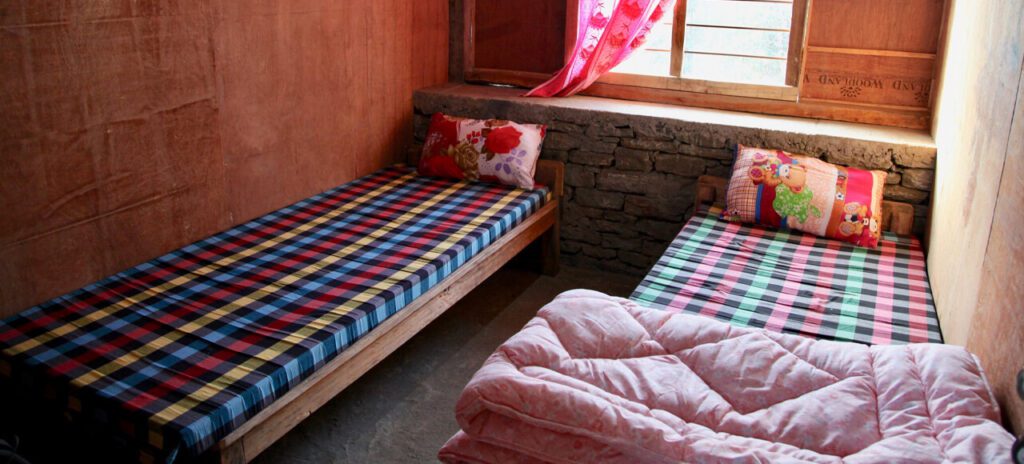
A tent can also protect wild animals, such as bears or mountain lions, which can be a potential danger in the area. When trekking in remote areas, it may be difficult to find accommodations. Having a tent with you allows you to set up camp wherever you like, without having to rely on finding a suitable lodging option.
Personal Hygiene Items:
Proper hygiene helps prevent the spread of bacteria, viruses, and other germs that can cause illness. In an environment where medical facilities are scarce and difficult to access, staying healthy is essential. Personal hygiene items, such as toothpaste, soap, and wet wipes, can help keep you feeling clean and refreshed, even when you are far away from home. On a solo trek, you will need to carry all of your supplies with you, including hygiene items. By packing eco-friendly products and disposing of them properly, you can reduce your impact on the environment.
Trekking Poles:
Trekking poles can be a useful tool for any trekker, but they are especially important during a solo trek to Everest Base Camp for several reasons. Poles can provide support and stability on uneven terrain, reducing the risk of falls and injuries. This is especially important during a solo trek, where there may not be anyone to assist you if you get injured.
It can help reduce the impact on your joints, especially on steep descents. This can prevent fatigue and reduce the risk of injury. It can also help improve balance, especially when crossing streams or walking on narrow trails. This is important for solo trekkers who may not have anyone to provide support. It also can help distribute the weight of your backpack and gear, making it easier to carry heavy loads.
Everest Base Camp Solo Trek Cost
Trekking to Everest Base Camp is a dream come true for many adventure enthusiasts. It is an opportunity to witness the world’s highest mountain up close and personal. However, many people are deterred from fulfilling this dream due to the cost involved. In this blog post, we will break down the cost of trekking to Everest Base Camp solo.
First, let’s discuss the expenses that you can expect to incur during the trek. The cost of permits, food, accommodation, and transportation varies depending on the season and the level of comfort you prefer. However, based on current prices, here is an estimated cost breakdown for a 12-day solo trek to Everest Base Camp.
Permits:
- Sagarmatha National Park Permit: NPR 3,000 (approx. USD 25)
- Khumbu Pasang Lhamu Rural Municipality Permit: NPR 2,000 (approx. USD 17)
Accommodation:
- Tea House/Lodge: NPR 500-1,500 (approx. USD 4-13) per night, depending on the season and location
- Camping: NPR 1,500-2,500 (approx. USD 13-21) per night, depending on the season and location
Food and Water:
- Meals: NPR 400-1,200 (approx. USD 3-10) per meal, depending on the location
- Water: NPR 50-150 (approx. USD 0.5-1.3) per liter, depending on the location
Transportation:
- Kathmandu to Lukla flight: USD 170-250 (one way)
- Lukla to Kathmandu flight: USD 170-250 (one way)
Miscellaneous:
- Trekking gear: The cost varies depending on the quality and brand of the gear you want. However, a more affordable option is to rent the gear in Kathmandu, it is just a fraction of the cost of purchasing new gear.
- Guide and porter: Hiring a guide or porter makes the trek easier and more comfortable. The cost for a guide ranges from USD 25-35 per day, and the cost for a porter ranges from USD 15-25 per day.
Based on the estimated cost breakdown above, the total cost for a 12-day solo trek to Everest Base Camp would be approximately USD 1,400-1,800. However, please keep in mind that the cost may vary depending on the season and the level of comfort you prefer.
Is Everest Base Camp Solo Trek worth it?
For many avid trekkers, Everest Base Camp is the ultimate destination. It’s an opportunity to explore the majestic Himalayas, witness stunning views of the tallest peaks in the world, and immerse oneself in the unique culture of the Sherpa people. However, the question arises, is it worth doing a solo trek to Everest Base Camp? In this blog post, we’ll take a closer look at the pros and cons of this adventure.
Pros of Solo Trekking to Everest Base Camp:
- Flexibility: One of the biggest advantages of solo trekking to Everest Base Camp is that you have complete control over your itinerary. You can plan your route, pace, and rest days based on your preferences and fitness level. You don’t have to worry about matching someone else’s schedule, and you can be as flexible as you want.
- Cost-effective: Solo trekking can also be a more cost-effective option, as you don’t have to pay for a guide or porter. Additionally, you can save money on accommodation and meals by staying in basic tea houses and eating local food.
- Personal growth: Trekking solo can also be an incredibly rewarding experience, allowing you to push yourself out of your comfort zone, develop self-reliance and resilience, and gain a sense of independence.
Cons of Solo Trekking to Everest Base Camp:
- Safety: Safety is always a concern when trekking in remote and rugged terrain. Without a guide or porter, you will need to carry all your gear and supplies yourself, which can be challenging. Also, you’ll need to be familiar with the route and area and know how to navigate in case of inclement weather.
- Loneliness: Trekking solo can be a lonely experience, and you won’t have anyone to share your experiences with or rely on for support in case of emergencies. This can be particularly challenging in high-altitude environments where there is a high risk of altitude sickness.
- Language barrier: Another potential challenge of solo trekking is the language barrier. While many locals in the Everest region speak English, communication can be difficult, especially in more remote areas.
Advantages of Everest Base Camp Solo Trek
Solo trekking to Everest Base Camp can be an extraordinary and life-changing experience. Some of the merits of solo trekking to Everest Base Camp are:
Connection with nature:
Trekking solo to Everest Base Camp offers a chance to connect with nature profoundly. The natural beauty of the Himalayas is awe-inspiring and the silence and solitude of the trek can be deeply meditative and rejuvenating.
The trek to Everest Base Camp takes you through many traditional Sherpa villages, providing an opportunity to immerse yourself in local culture and learn about the unique customs and traditions of the region. Trekking solo allows you to interact more freely with locals and gain a deeper understanding of their way of life.
Challenge and achievement:
Trekking solo to Everest Base Camp is a challenging adventure that requires physical and mental strength, perseverance, and determination. The sense of achievement upon reaching your goal is incredibly rewarding and can inspire you to take on new challenges in your life.
Reflection and introspection:
Trekking solo allows you to spend time alone with your thoughts and reflect on your life and goals. This introspection can help you gain clarity and perspective on your priorities and aspirations, leading to personal growth and development.
It is possible to trek alone to Everest Base Camp, but it is strongly recommended that you hire a local guide or porter to accompany you on the trek. Trekking in the Everest region can be challenging, with high altitude, extreme weather conditions, and difficult terrain, and having a local guide or porter can provide valuable support and assistance.
Let our expert team at Asian Heritage Treks and Travel take care of everything — from guided tours to personalized packing tips and travel arrangements.
Plan My Everest Trip




